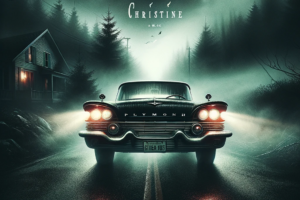
Passions and Shadows: The Tale of The Isle of the Dead
Let’s delve into the specifics of this novel, “The Isle of the Dead.” What motivated me to write it? To explain, I need to recall an incident from my past.
I was perhaps twelve years old or so. I was fortunate to have a well-stocked home library, rich in books of all types. I remember finding books on history, geography, and science. There were psychology books, even psychoanalysis ones, like Freud’s “The Interpretation of Dreams,” which fascinated me as a child. There were books of every genre.
There were also many encyclopedias: a history of modern Europe from the University of Cambridge, a medical encyclopedia, and a huge UTET dictionary of the Italian language in about twenty volumes. There were obviously encyclopedias for children, as we were six siblings, I remember “Conoscere,” among others, and there was also the “encyclopedia of women”, my mother’s. Then there was an old encyclopedia from the nineteenth century by Cesare Cantù. It was a universal encyclopedia, where you could find every kind of news, from current events to universal history, from the customs of a particular people to the artistic descriptions of the world’s most famous monuments. I immersed myself in these encyclopedias to grow my imagination. Before talking about my imagination, however, I must complete the picture of the home library.
There were obviously many novels, and not only novels that today would be defined as mainstream or realistic… I remember, for example, “Tropic of Cancer” and “Tropic of Capricorn” by Henry Miller, which scared me just to look at them, but also adventure novels, science fiction, more suitable for a child. There were the famous books by Peter Kolosimo on phantarcheology, which for me were still novels, nothing more or – perhaps – nothing less than novels, and therefore stories that spoke directly to my imagination.
Among these novels were some by Emilio Salgari. We know Salgari well in Verona, the creator of Sandokan. What struck me at the time, reading one of his novels that I now don’t exactly remember which one it was, what struck me was discovering that Emilio Salgari spoke of distant and faraway worlds, describing them minutely and as if he had lived there… without actually ever having been there.
He used, precisely, his imagination, his inventiveness, in addition to a good dose of information that was available at the time. And at the time, in the nineteenth century, they were not exactly the quantity of those we can have in our days, us. Today we have the internet and Wikipedia, and we can find a lot about every corner of the world, including photos and videos. In Salgari’s time, no. It was all or almost all the fruit of the author’s inventive ability.
And here we return to the imagination, therefore. How does a writer nourish his imagination? Well, I can tell you how mine was nourished.
I liked to imagine, it has always been like that. But one of the elements that characterized me and that even today are part of my way of being, was that I invented things, I tried to imitate things that existed: languages and secret alphabets, drawings and lives of great artists, like for example Leonardo da Vinci and others. I identified with other lives.
The really fundamental element, however, was one. My father gave me two or three very large books, well laid out, with cardboard and fabric covers… and completely blank pages. When I opened them, I immediately imagined how to fill them and there, on those blank pages, my imagination developed. But for this imagination to develop, there had to be another fundamental, indispensable element.
PASSION. What is passion, if not a kind of demon that enters you and takes you to inaccessible places, to reach which you struggle and yet you are willing to do anything, just to reach them?
The common element between me and my protagonist, Andrea Nascimbeni, is precisely this. Nascimbeni is also driven to the Isle of the Dead by his passion for his anthropological discipline. But he does it above all because those open tombs that he sees in Böcklin’s painting, stir something important in him, which even he does not know exactly.
The theme of death attracts him to that island, but right there, on that island where he goes driven by his science and the passion he has for knowledge, he will first of all discover love. Love and death are always the great themes of every story, of every narrative: in The Isle of the Dead, exactly as in Rachmaninov’s symphonic poem to which it is inspired, these two aspects become two rivers, sometimes karstic, hidden, but increasingly evident, which in the last part of the story meet to create and stage the eternal conflict of human existence.
It’s no coincidence that when Andrea Nascimbeni arrives on the island, the landscape he finds is diametrically opposite to that seen in Böcklin’s paintings. I myself, in describing it, was inspired by another painting by the great Swiss artist, namely “The Island of Life,” from 1888, which seems almost born in opposition to the pharaonic idea represented in the cycle of the Isle of the Dead. For Arnold Böcklin as well, life and death are the two poles of a dialectic that cannot be distanced in any way.
I believe that in this novel, “The Isle of the Dead,” everyone will rediscover a side of their existence and perhaps each of you, reading it, will be moved by a question.
This question is:
What am I willing to question for my passions?
And above all, another:
What would I have done, in the protagonist’s place, at the end of the story?



